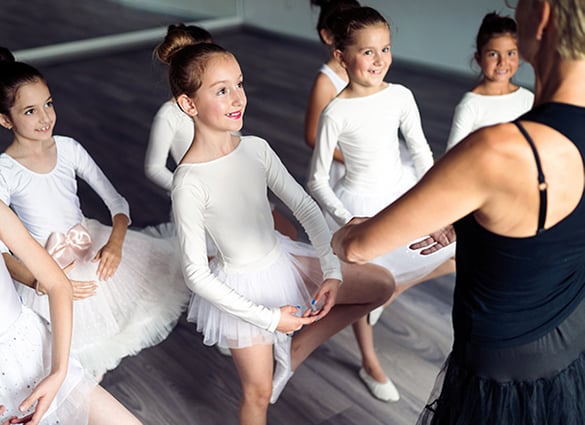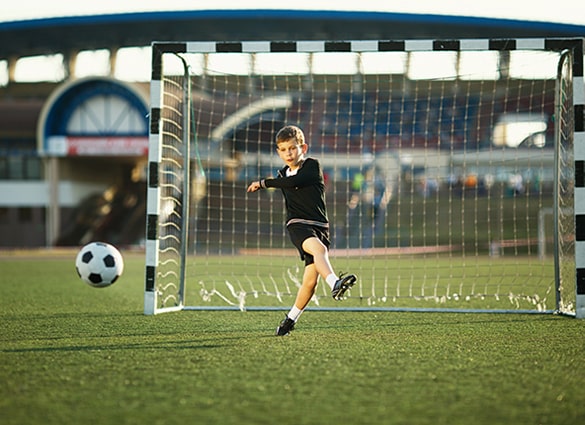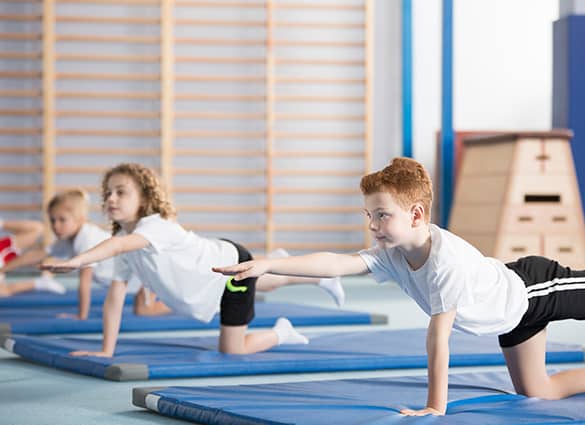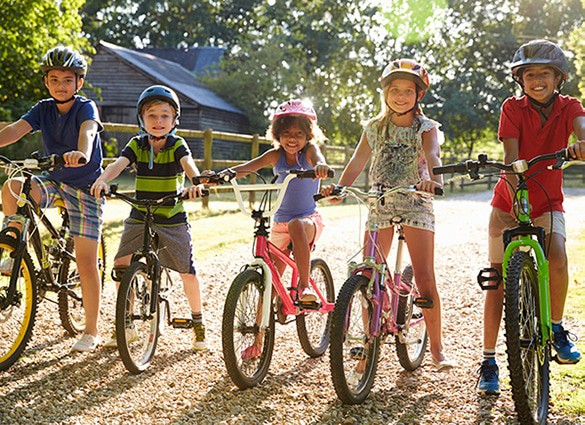Age-appropriate balance
Balance is that ability to maintain a controlled body position during different types of activities. Age-appropriate balance and coordination skills enable children to be involved in the participation of sport with a reasonable amount of success as it aids fluid body movement for physical skill performance (eg. ballet, ball sports, gymnastics etc).
Proprioception is an essential part of our body’s ability to move. Proprioception is the body’s ability to sense movement within a joint and to sense where our joints and limbs are in space. Nerve endings in muscles and tendons provide our brain with constant feedback on our joint position and this information helps us to coordinate our limb movements.
Many children have difficulties with balance, coordination and proprioception related to problems including autism spectrum disorder, developmental coordination disorder or joint hypermobility syndromes.


What are the signs of balance or coordination problems?
Some signs that parents, teachers or caregivers might notice that may indicate that there is a problem with a child’s balance, coordination or proprioception include:
- Falls easily, trips often, is ‘clumsy’, or finds it difficult to ‘recover’ quickly from being off balance. Bumps into, spills or knocks things over;
- Avoids sports or physical activity, especially those involving running activities;
- Is less skilful than their peers in refined sports participation (eg: team sports);
- Moves ‘stiffly’, has an awkward gait or lacks fluid body movement (eg: runs like a robot);
- Is slower than their peers in mastering physical skills (eg. skipping, bike riding, swimming, jumping rope);
- The younger child may be late in reaching some developmental milestones (eg. crawling, walking).
Children who have difficulties with balance and coordination may also have other contributing factors including:
- Hypotonia, or low muscle tone, that results in the child having ‘floppy’ muscles
- Joint hypermobility, or overly-flexible joints and soft tissues;
- Poor physical endurance, fatigue or tires easily with physical activity;
If my child has problems with balance and coordination, how can a Podiatrist help?
Podiatry treatment for children with balance or coordination difficulties will depend upon the individual child, presence of symptoms and the results of the physical examination and gait analysis. Podiatry treatment may involve a combination of the following;
- Custom orthotics – to address any abnormal foot posture problems and provide a stable base of support to help with balance and dynamic stability;
- Home exercise program – to address any foot or leg muscle imbalance, weakness or tightness. If your child requires a pelvic stability or core strengthening program a physiotherapy referral may be recommended;
- Balance and proprioception exercises, activities and games;
- Footwear advice – for school and sport.


What should I do if my child has problems with balance, coordination or proprioception?
If your child has difficulties with balance or coordination and you are concerned that their gait or foot posture may be contributing to the problem, don’t hesitate to consult with our experienced podiatrists for a comprehensive walking assessment and professional advice.

